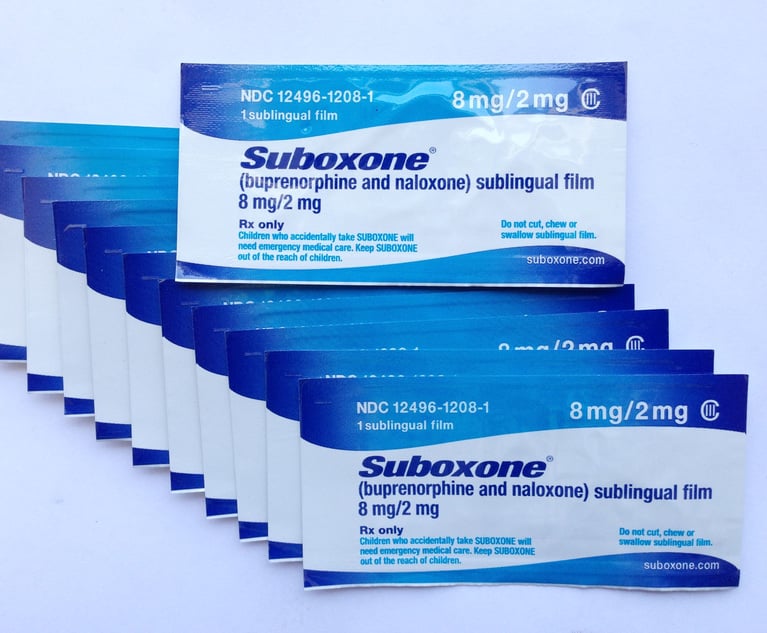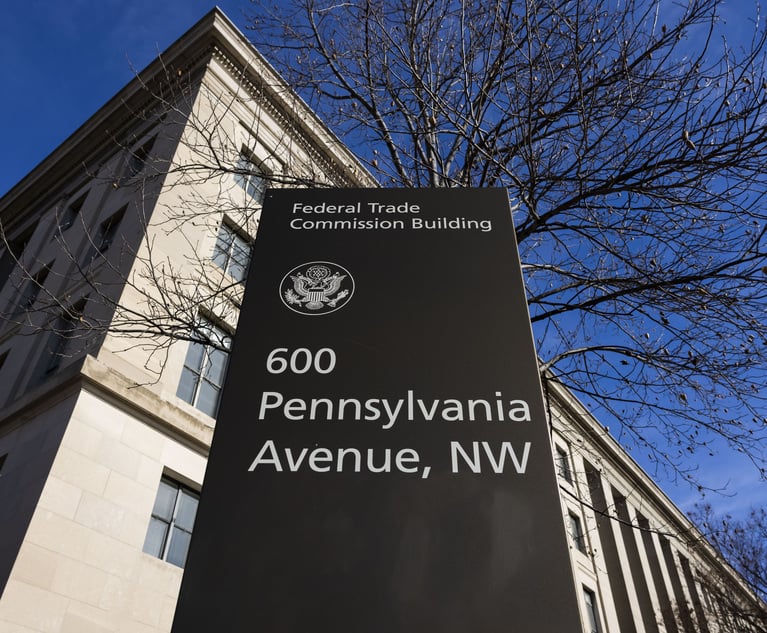Appellate Court Vacates Class in Goldman Securities Suit
The panel said U.S. District Judge Paul Crotty's handling of Goldman Sachs' attempt to rebut key elements required for class certification should require further review.
January 12, 2018 at 05:20 PM
5 minute read
 Photo by Shutterstock
Photo by Shutterstock A class of investors suing Goldman Sachs over public statements that allegedly were in conflict with its investment decisions in the run-up to the financial crisis took a step backward Friday.
The U.S. Court of Appeals for the Second Circuit delivered a win for the storied investment bank in a decision that vacated class certification, sending the case back to the district court. The panel of Second Circuit Judges José Cabranes and Richard Wesley, with U.S District Judge William Sessions III of the District of Vermont sitting by designation, encouraged Southern District Judge Paul Crotty to review evidence that Goldman believes should defeat the ability for the investors to be certified as a class.
The suit, Arkansas Teachers Retirement System v. Goldman Sachs Group, 16-250, filed in the aftermath of the burst housing bubble, focuses on the now-infamous short positions popularized in the book and film ”The Big Short.” The investors allege that Goldman's public statements avowing conflict-free fealty to their clients' interests were at odds with the positions they took in a number of funds. These include the Abacus fund that allowed its client, investor John Paulson's hedge fund, to have an active role in selecting assets for the fund, without disclosing the fact Paulson held the sole short position.
Goldman would ultimately pay a $550 million Securities and Exchange Commission penalty for the move. Paulson's firm walked away from the deal with a profit of $1 billion after the market tanked, thanks to the short. Both parties later settled a lawsuit over the arrangement.
The appeal came after Crotty certified the class, despite attempts by Goldman to rebut plaintiffs' claims under the rules laid down by the U.S. Supreme Court's 1988 decision in Basic v. Levinson. Basic provides a way for class certification in securities litigation where plaintiffs would otherwise all but certainly fail under federal civil procedural rules.
“If every plaintiff had to prove she relied on a misrepresentation in choosing to buy stock, it would effectively prevent investors from proceeding as a class; individual issues of reliance would overwhelm common ones and make certification under Rule 23(b)(3) inappropriate in every case,” the panel noted.
At issue was the other part of the Basic presumption, which provides defendants the ability to rebut class claims by showing the fraud on the market theory that underlies Basic. If it can be shown that misrepresentations did not affect the stock price, elements critical to the class certification process can be defeated.
The recent appellate decision in Waggoner v. Barclays provided further clarity relied on by the panel in its decision. Some evidence was not enough to rebut the Basic presumption; a preponderance was required.
Goldman's attempts at rebuttal at the district court failed to prevail with Crotty. Despite offering what it says were 34 examples of times before 2010 when public reports spoke about the firm's conflicts of interest in the four funds at issue and no stock decline ensued, the judge found they provided no “conclusive evidence” showing a separation between misrepresentation and market action.
The issue, for the panel, was a semantic one.
“Because the district court concluded its findings with these words, it is unclear to us whether the court required more of defendants than a preponderance of the evidence,” the panel stated, vacating the district court's order and remanding the case back to Crotty “to reconsider defendants' evidence in light of the Barclays standard.”
The panel went further. It was a mistake that no evidentiary hearings or oral arguments were held on defendants' evidence attempting to rebut the Basic presumption ahead of class certification, the panel said. The district court justified its decision by characterizing Goldman's moves as an inappropriate “truth on the market” defense or an argument about materiality that it need not consider at the class certification stage.
The panel disagreed. Goldman's point was to show that the revelation between 2007 and 2009 had no accompanying stock price decline, rather than an attempt to show the price had already been adjusted by the “truth.”
“Defendants used that evidence to show that their statements about Goldman's efforts to avoid conflicts of interest 'did not actually affect the stock's market price,'” the panel said, quoting from the U.S. Supreme Court's 2014 decision in Halliburton v. Erica P. John Fund.
Likewise, the issue of materiality in bringing up price impact has a legitimate purpose under the circumstances, the panel said. The presumption under Basic would be nullified if the defendant was able to show the alleged misrepresentations had no impact on the stock price.
The panel noted that it was not reviewing whether the evidence presented by Goldman was sufficient to rebut the Basic presumption, but encouraged the district court on remand to hold proceedings ahead of making a further determination on the preponderance of that evidence on remand.
Goldman's legal efforts are being led by Sullivan & Cromwell partner Robert Giuffra Jr. He declined to comment on the decision.
The plaintiff investors were represented on appeal by Goldstein & Russell's Thomas Goldstein. He did not return a request for comment.
This content has been archived. It is available through our partners, LexisNexis® and Bloomberg Law.
To view this content, please continue to their sites.
Not a Lexis Subscriber?
Subscribe Now
Not a Bloomberg Law Subscriber?
Subscribe Now
NOT FOR REPRINT
© 2025 ALM Global, LLC, All Rights Reserved. Request academic re-use from www.copyright.com. All other uses, submit a request to [email protected]. For more information visit Asset & Logo Licensing.
You Might Like
View All

Judge Denies Retrial Bid by Ex-U.S. Sen. Menendez Over Evidentiary Error

What Businesses Need to Know About Anticipated FTC Leadership Changes
7 minute readTrending Stories
- 1Lawsuit Against Major Food Brands Could Be Sign of Emerging Litigation Over Processed Foods
- 2Fellows LaBriola LLP is Pleased to Announce that Alisha Goel Has Become Associated with The Firm
- 3Law Firms Turn to 'Golden Handcuffs' to Rein In Partner Movement
- 4Friday Newspaper
- 5Public Notices/Calendars
Who Got The Work
J. Brugh Lower of Gibbons has entered an appearance for industrial equipment supplier Devco Corporation in a pending trademark infringement lawsuit. The suit, accusing the defendant of selling knock-off Graco products, was filed Dec. 18 in New Jersey District Court by Rivkin Radler on behalf of Graco Inc. and Graco Minnesota. The case, assigned to U.S. District Judge Zahid N. Quraishi, is 3:24-cv-11294, Graco Inc. et al v. Devco Corporation.
Who Got The Work
Rebecca Maller-Stein and Kent A. Yalowitz of Arnold & Porter Kaye Scholer have entered their appearances for Hanaco Venture Capital and its executives, Lior Prosor and David Frankel, in a pending securities lawsuit. The action, filed on Dec. 24 in New York Southern District Court by Zell, Aron & Co. on behalf of Goldeneye Advisors, accuses the defendants of negligently and fraudulently managing the plaintiff's $1 million investment. The case, assigned to U.S. District Judge Vernon S. Broderick, is 1:24-cv-09918, Goldeneye Advisors, LLC v. Hanaco Venture Capital, Ltd. et al.
Who Got The Work
Attorneys from A&O Shearman has stepped in as defense counsel for Toronto-Dominion Bank and other defendants in a pending securities class action. The suit, filed Dec. 11 in New York Southern District Court by Bleichmar Fonti & Auld, accuses the defendants of concealing the bank's 'pervasive' deficiencies in regards to its compliance with the Bank Secrecy Act and the quality of its anti-money laundering controls. The case, assigned to U.S. District Judge Arun Subramanian, is 1:24-cv-09445, Gonzalez v. The Toronto-Dominion Bank et al.
Who Got The Work
Crown Castle International, a Pennsylvania company providing shared communications infrastructure, has turned to Luke D. Wolf of Gordon Rees Scully Mansukhani to fend off a pending breach-of-contract lawsuit. The court action, filed Nov. 25 in Michigan Eastern District Court by Hooper Hathaway PC on behalf of The Town Residences LLC, accuses Crown Castle of failing to transfer approximately $30,000 in utility payments from T-Mobile in breach of a roof-top lease and assignment agreement. The case, assigned to U.S. District Judge Susan K. Declercq, is 2:24-cv-13131, The Town Residences LLC v. T-Mobile US, Inc. et al.
Who Got The Work
Wilfred P. Coronato and Daniel M. Schwartz of McCarter & English have stepped in as defense counsel to Electrolux Home Products Inc. in a pending product liability lawsuit. The court action, filed Nov. 26 in New York Eastern District Court by Poulos Lopiccolo PC and Nagel Rice LLP on behalf of David Stern, alleges that the defendant's refrigerators’ drawers and shelving repeatedly break and fall apart within months after purchase. The case, assigned to U.S. District Judge Joan M. Azrack, is 2:24-cv-08204, Stern v. Electrolux Home Products, Inc.
Featured Firms
Law Offices of Gary Martin Hays & Associates, P.C.
(470) 294-1674
Law Offices of Mark E. Salomone
(857) 444-6468
Smith & Hassler
(713) 739-1250







